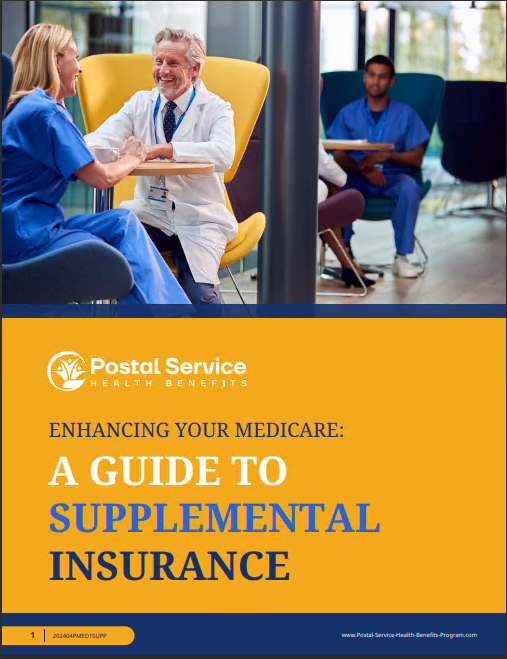Key Takeaways
- Postal workers transitioning to PSHB can follow a structured approach to ensure a smooth experience without missing essential steps.
- Understanding your current benefits and preparing in advance will help eliminate confusion when switching to the Postal Service Health Benefits (PSHB) plan.
Switching to PSHB? Here’s the Step-by-Step Guide for Postal Workers to Make the Transition Easy
The switch to Postal Service Health Benefits (PSHB) is a significant shift for many postal workers. With its introduction, postal employees need a straightforward and clear path to follow to make the transition as easy as possible. This step-by-step guide will outline key considerations, necessary actions, and timelines for successfully switching to PSHB without losing any important benefits along the way. By staying organized and informed, postal workers can seamlessly navigate this transition.
Step 1: Understand the Basics of PSHB
Postal workers will benefit from familiarizing themselves with the Postal Service Health Benefits (PSHB) program, which was developed to provide health benefits for active and retired postal workers. The PSHB is separate from the Federal Employees Health Benefits (FEHB) program, and transitioning into this new structure is essential for postal employees.
Understanding the basic structure of PSHB ensures that postal workers know what to expect. The benefits, eligibility criteria, and the differences between PSHB and FEHB are important elements. This familiarity will allow employees to make the transition without feeling overwhelmed by new terminology or processes.
Key Points to Remember:
- PSHB is exclusive to postal employees and retirees, separate from FEHB.
- Eligible workers include active and retired postal employees, ensuring continued coverage.
- Recognize the core differences between PSHB and FEHB to understand how the transition affects you.
Step 2: Assess Your Current Health Coverage
Before making the switch, postal workers should thoroughly review their current health coverage under FEHB. Evaluating your plan and current benefits will help you understand how PSHB might differ. Take note of your co-pays, out-of-pocket expenses, and covered services. This comparison will give you a baseline to assess whether PSHB meets your healthcare needs.
Additionally, make sure to assess any additional coverage like dental or vision, which might require separate handling during the transition. This will ensure there are no gaps in your overall healthcare coverage once you switch to PSHB.
Action Items:
- Review your current FEHB benefits statement.
- Compare your current plan with the available options under PSHB.
- Consider any supplemental plans for dental, vision, or additional coverage.
Step 3: Stay on Top of Deadlines
One of the most crucial aspects of switching to PSHB is understanding the deadlines. Missing an important date could result in a lapse in your coverage, causing stress and potential financial burdens. The transition period may include multiple deadlines depending on your employment status—whether you’re actively employed, retired, or nearing retirement.
The Open Season enrollment period for PSHB is one such important deadline, and postal workers should plan to make their selection during this window. By keeping a calendar of important dates, you can ensure that you submit all necessary forms and documents on time.
Pro Tips for Success:
- Keep track of Open Season enrollment dates for PSHB.
- Submit required documents, such as proof of employment or retirement status, promptly.
- If you’re close to retirement, coordinate your retirement plans with the PSHB switch to avoid delays.
Step 4: Consult with Licensed Insurance Agents
Switching to a new health benefits plan may bring up questions or concerns. Consulting with licensed insurance agents is an effective way to ensure you are fully aware of all your options. They can offer personalized advice on how PSHB compares with your previous coverage and help clarify any confusing elements of the transition.
Additionally, a licensed insurance agent can explain how your benefits will evolve over time, whether you are an active employee or transitioning into retirement. Be sure to seek professional advice to avoid making costly mistakes during the switch.
Benefits of Consulting Experts:
- Get personalized advice on navigating PSHB.
- Avoid coverage gaps by fully understanding the transition process.
- Ensure you maximize your benefits under the new plan.
Step 5: Make Your Plan Selection
During the PSHB Open Season, postal workers will need to choose a plan that fits their needs. Just like the FEHB, PSHB offers multiple options, each designed to accommodate different healthcare needs. It’s important to review all available plans and determine which one is best suited for your medical and financial situation.
Consider factors such as:
- Monthly premiums
- Out-of-pocket costs
- Coverage for prescription medications
- Access to preferred healthcare providers
Tips for Choosing the Right Plan:
- Make a list of your current healthcare needs (e.g., ongoing prescriptions, specialist visits).
- Compare the network of healthcare providers in each plan to ensure your doctors are covered.
- Consider long-term healthcare needs, especially if you are nearing retirement or have chronic conditions.
Step 6: Prepare Documentation for Enrollment
The enrollment process for PSHB requires specific documentation to verify your eligibility and coverage status. Postal workers should gather all necessary documents before the enrollment period begins. Documents such as your employee ID, FEHB plan information, and any proof of additional insurance coverage should be ready for submission.
By having these documents on hand, you will be able to smoothly transition into the PSHB program without delay. Being proactive in this stage helps avoid last-minute stress and potential hiccups.
Checklist for Enrollment:
- Postal Service employee ID
- Current FEHB plan details
- Proof of retirement status (if applicable)
- Any supplemental insurance information
Step 7: Review and Confirm Your Enrollment
After submitting your enrollment, it’s important to confirm that everything has been processed correctly. Postal workers should receive a confirmation letter or notification confirming their PSHB coverage. Keep a copy of this confirmation for your records in case any issues arise later.
It’s also a good idea to double-check the coverage details you selected during Open Season. Make sure the plan you chose aligns with your healthcare needs, and ensure that all your documentation has been received by the appropriate parties.
Post-Enrollment Tips:
- Keep a copy of your PSHB enrollment confirmation for future reference.
- Double-check your coverage to ensure it aligns with your healthcare requirements.
- Stay informed about any updates or changes in the PSHB plan.
Step 8: Stay Informed About Future Updates
Once you’ve made the switch to PSHB, it’s important to stay informed about any future updates or changes to the plan. Healthcare programs are subject to policy shifts, so keeping up with any news or updates can help you stay prepared. Regularly check for updates from the Postal Service and consult with licensed insurance agents if you have any questions.
By remaining proactive, postal workers can continue to make informed decisions regarding their health coverage even after the transition is complete.
Staying Ahead:
- Regularly check for policy updates related to PSHB.
- Stay in touch with licensed insurance agents for ongoing guidance.
- Ensure your healthcare plan continues to meet your needs as they evolve.
Making the Transition to PSHB Smooth and Simple
The transition to Postal Service Health Benefits may seem daunting, but with the right preparation, postal workers can make the switch smoothly. By following these steps—understanding PSHB, reviewing current benefits, meeting deadlines, consulting experts, and staying organized—you can ensure a hassle-free transition. Staying informed and prepared will not only protect your health coverage but also provide peace of mind during this important change.
Contact Information:
Email: [email protected]
Phone: 3465556789





